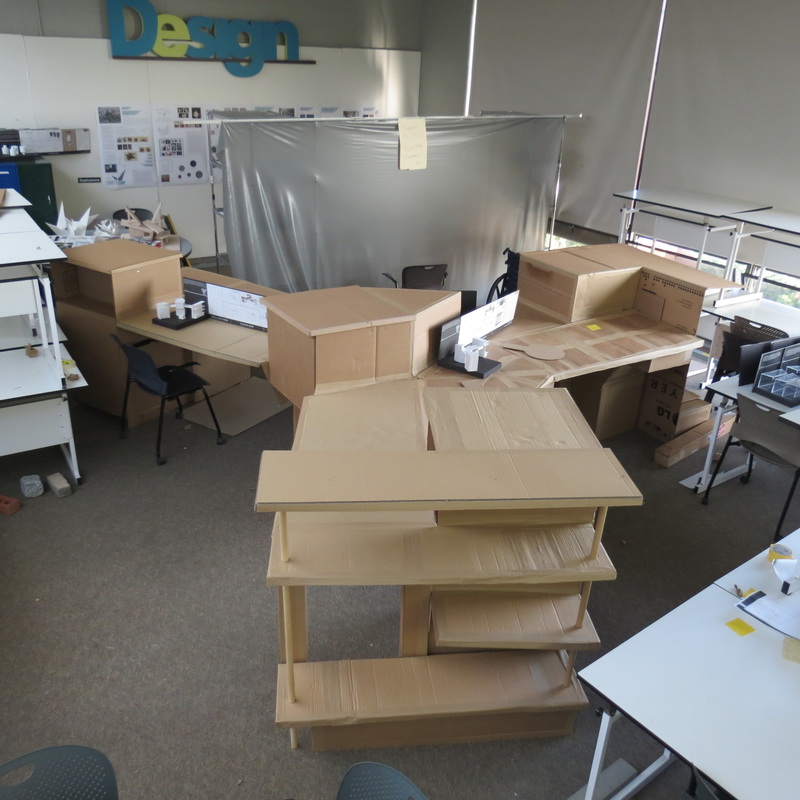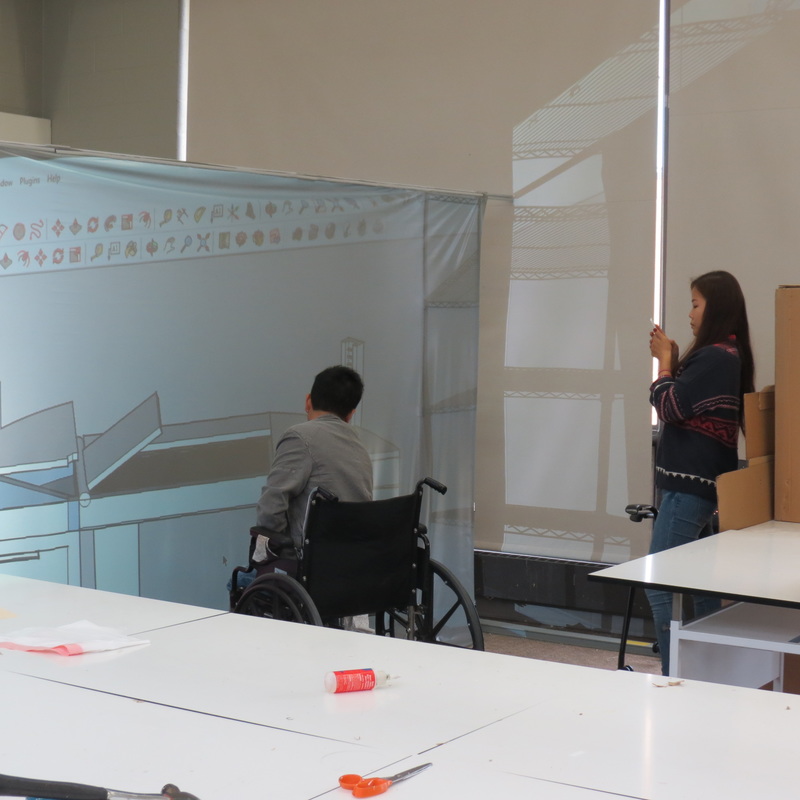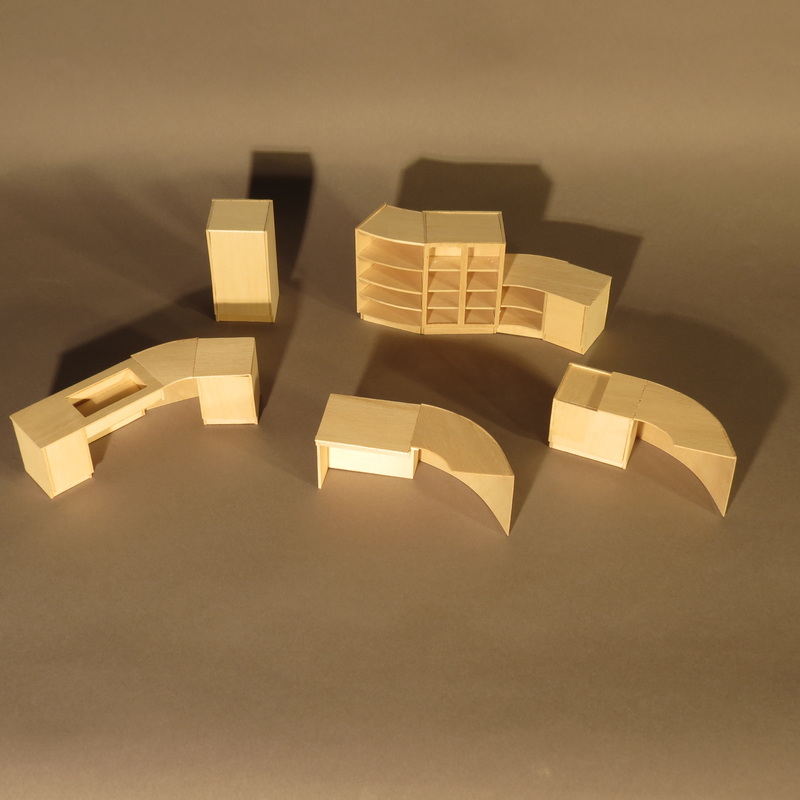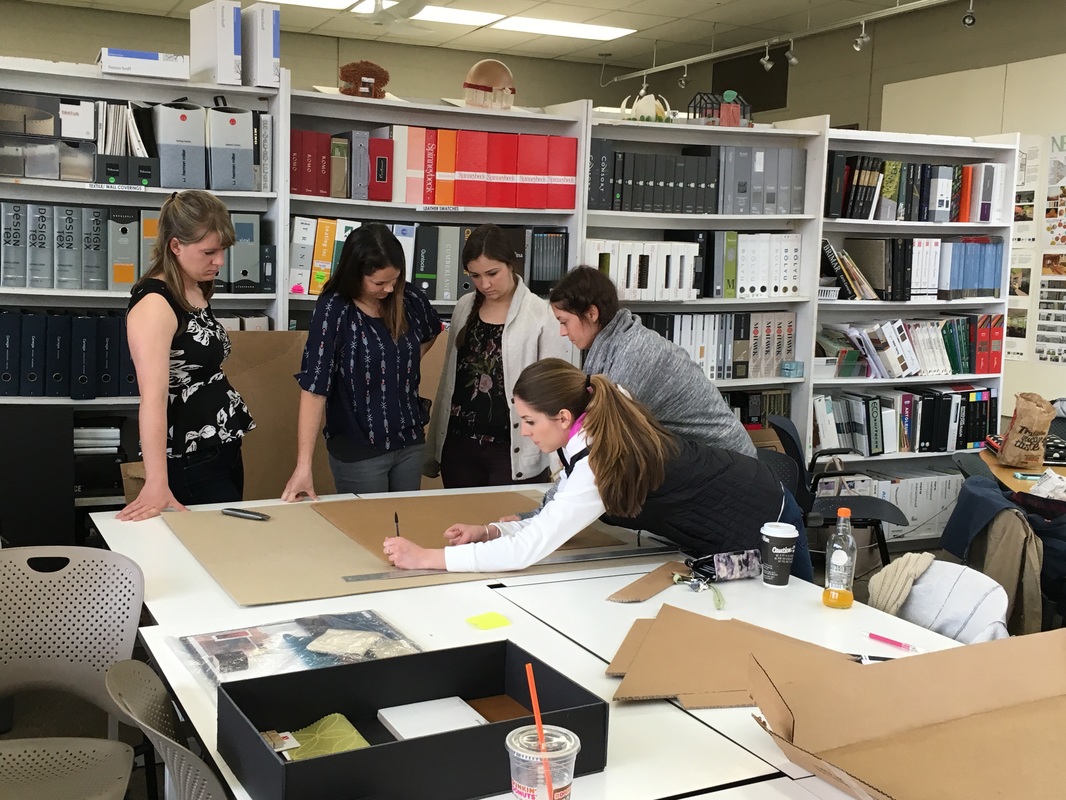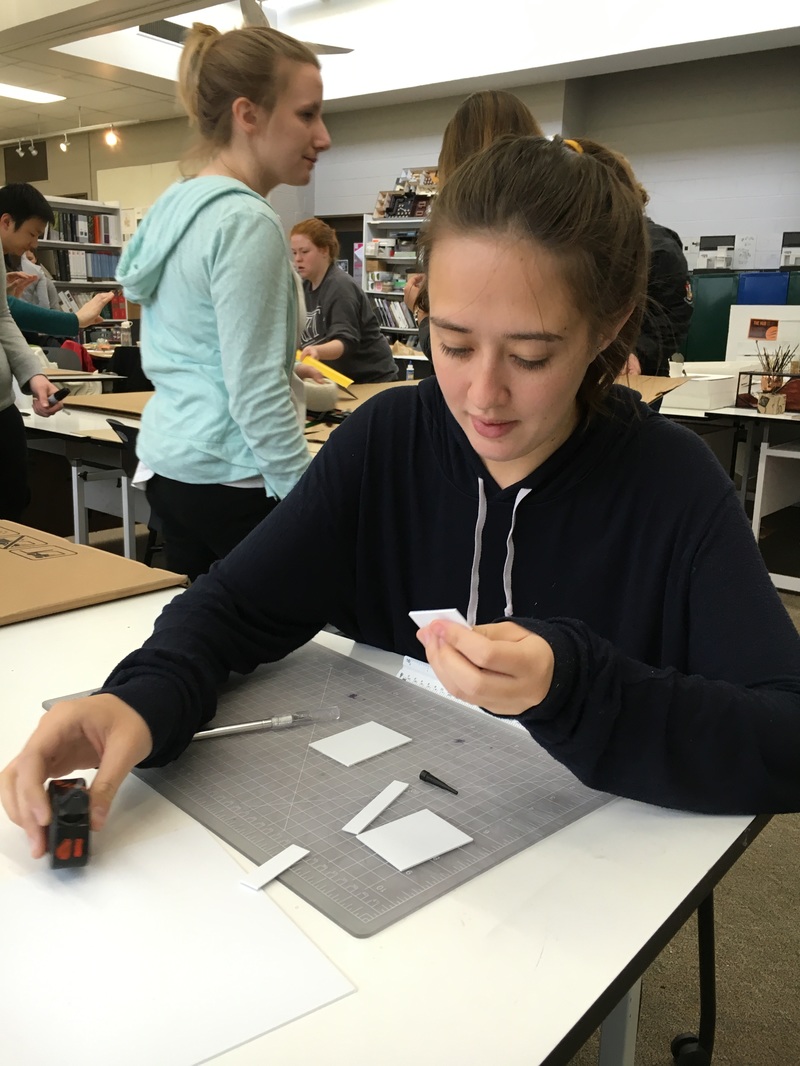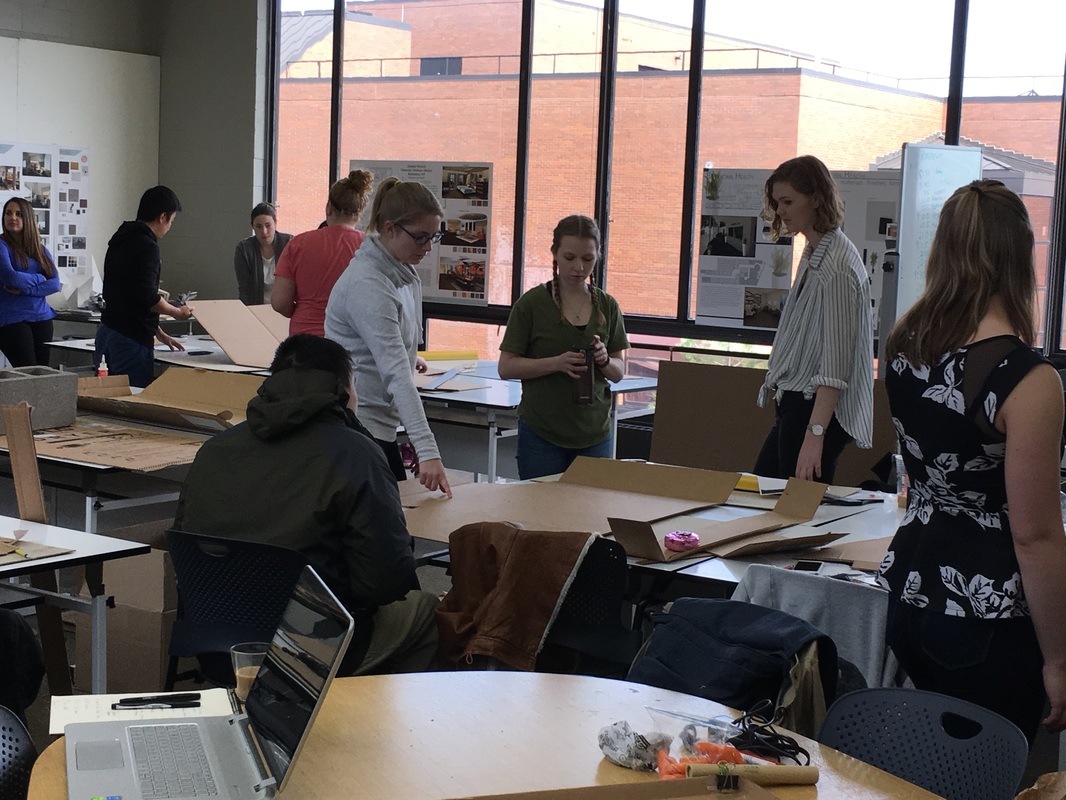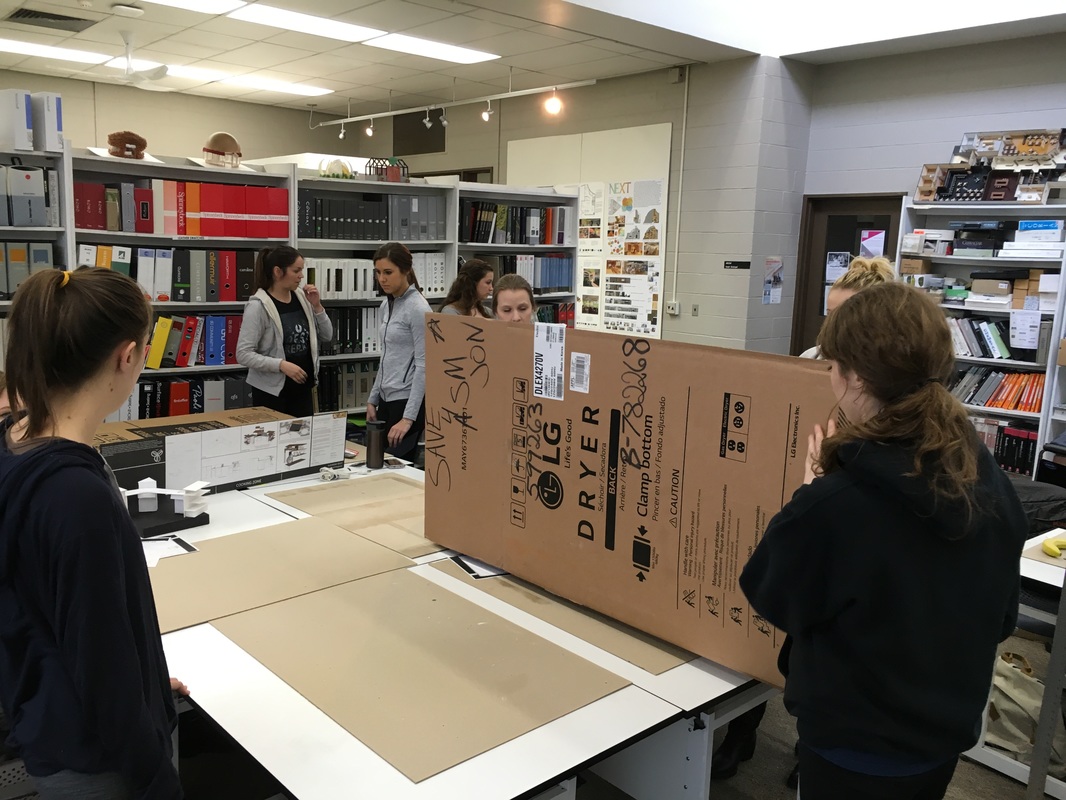Special Projects: Cooking Work Zones
This studio course focused on universal design and redefining the kitchen environment by engaging students in a process of discovery. As studio teams they first engaged in an extensive research exploration which served as discussion topics and the reference material for the course.
Exercises following the research phase engaged students first hand in the cooking experience. Without knowing the future exercises, students were tasked to find a series of recipes, record the ingredients and locate them within the kitchen, for example in refrigeration, drawers etc. Students also had to identify the cookware and utensils and location of storage. Students shared their recipes with teammates and were tasked with cooking one meal according to the recipe and storage locations in an existing kitchen environment as both an ambulatory and wheelchair bound individual. Student teams videod the experience and completed a series of experiential, ergonomic and tactile related questions to help them better understand what the cooking experience. A sample clip of the cooking experience is shown below.
As a studio we debriefed and identified key characteristics of the spaces for design considerations. Students were tasked with designing the key work zones in reverse, from the tactile experience outward to form and function. These projects were independently approached and included solutions for cooking, cleaning and consumable kitchen zones.
Exercises following the research phase engaged students first hand in the cooking experience. Without knowing the future exercises, students were tasked to find a series of recipes, record the ingredients and locate them within the kitchen, for example in refrigeration, drawers etc. Students also had to identify the cookware and utensils and location of storage. Students shared their recipes with teammates and were tasked with cooking one meal according to the recipe and storage locations in an existing kitchen environment as both an ambulatory and wheelchair bound individual. Student teams videod the experience and completed a series of experiential, ergonomic and tactile related questions to help them better understand what the cooking experience. A sample clip of the cooking experience is shown below.
As a studio we debriefed and identified key characteristics of the spaces for design considerations. Students were tasked with designing the key work zones in reverse, from the tactile experience outward to form and function. These projects were independently approached and included solutions for cooking, cleaning and consumable kitchen zones.
Samples of Student Work
|
|
|
Studio Process
After designing proposals for universal design kitchen work zones students engaged in a process of further discovery and refinement through projecting their designs at full scale and evaluating the ergonomic qualities of the "virtual" experience. The project that was deemed most successful from the guest critique was evaluated by the entire studio and then constructed at full scale in cardboard. Students engaged in a final evaluation of the combined cooking, cleaning and consumable work zones as a studio team.
